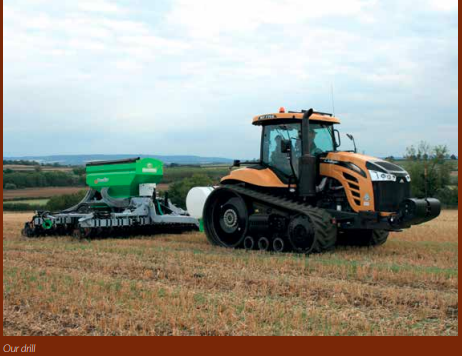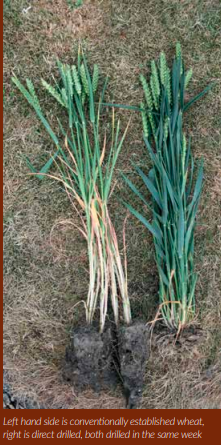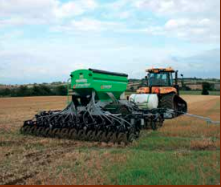
A baptism of fire into Direct Drilling
They say if you want to see the sunshine you have to weather the storm. That couldn’t be truer of this year. From one of the wettest starts to spring followed by the hottest start to summer I can remember in my 34 years.
The first ever crop we direct drilled was a field of winter wheat last November. It was drilled into wet soils which got wetter as the winter progressed. The second crop that we have direct drilled was spring oats into wet heavy soils in April. Both crops then had to go from an extremely wet winter and early spring to drought conditions when they were supposed to be filling ears. Considering the conditions mother nature has thrown at us this year the crops have been very resilient.
The wheat tillered out well and looked very healthy the whole way through the spring with very little disease. It also held on throughout the late spring and seemed too be a lot more drought tolerant compared to the conventionally drilled crops. As for the spring oats, they launched up out of the ground and grew away extremely quickly with moisture under them and sun above. They yielded well but the bushel weight was down significantly as a fair few groats hadn’t filled out. Most of these will be fed to our herd of Limousins as they haven’t made milling spec.

We also tried some direct drilled maize this spring which isn’t looking so special. When we drilled it, I was sure the maize wouldn’t be able to get its roots down. This wasn’t however the problem with it. The root ball has grown down over a foot however the lack of moisture after establishment meant that the fertilizer sat on cracked out soil and was never taken up by the plants. This stunted the plants at the beginning of the summer when it should have been building biomass. I’ll try direct drilled maize again in the future but for now the cattle will have to enjoy some whole crop wheat and the field in question will be used as a cover crop and chopped back into the soil, at least the worms will enjoy it.
Crops aside I have progressed in building my knowledge about the soil and how plants interact with the biology within it. This in my eyes is a vital part to direct drilling. I was told that going along to Groundswell would be an eye opener and it didn’t disappoint. I would strongly advice anyone growing crops to take a day out and get them selves along to this event. I learnt more in a day at Groundswell then going along to the multitude of agricultural events over the years.

As well as listening to some great speakers and seeing some new technology I got to have a chat with farmers that have been running successful no till farms for decades.
A chat with a couple of renowned conservation agriculturalists at Groundswell has made me think differently about how we treat the farm yard manure that we produce from our cattle herd. Previously the muck would have been heaped up in fields before spreading on the arable land. This year I have decided to compost it aerobically. The idea behind this is to build a healthy population of aerobic biology including bacteria and fungi in the compost. I have also added some wood chip to the manure to help increase the fungal populations in it. A lot of what I have learnt has come from reading articles and science papers from Elaine Inghams from the Soil Food Web and her approach to producing high quality compost.

As well as compost we are using cover crops to help increase the health of our soil. Our cover crops were established after winter barley using our Cross-slot drill. They will grow on through until Christmas. We will spray them off to allow the ground enough time to dry out before spring cropping.

As far as cover crop species goes I have selected a complex mix that Kings have produced for me. The mixture contains: Quinoa, Blue lupins, Buckwheat, Phacelia, Berseem Clover, Oil radish, Vetch and Linseed. I’ve left the barley volunteers growing in the field as the cereal constituent of the mix. The covers will have digestate spread on them if they look like they are struggling, but I’m hoping they won’t need any. My first-year direct drilling has had some ups and downs but all together I’m happy with the results. On top of the economic side its been great fun learning a bit more about how natural processes and ecosystems in the soil work. This year, we will be establishing all our winter and spring crop with our Cross Slot, the heavy clay has cracked out over the summer to a depth of two feet which will help with a bit of drainage as we transition from tillage. I’ll let you all know how it goes.